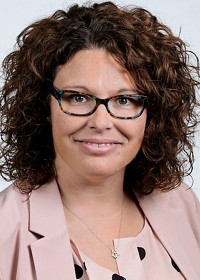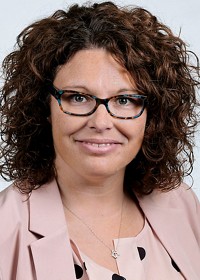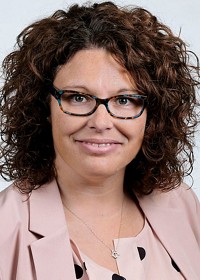Advertisement
Grab your lab coat. Let's get started
Welcome!
Welcome!
Create an account below to get 6 C&EN articles per month, receive newsletters and more - all free.
It seems this is your first time logging in online. Please enter the following information to continue.
As an ACS member you automatically get access to this site. All we need is few more details to create your reading experience.
Not you? Sign in with a different account.
Not you? Sign in with a different account.
ERROR 1
ERROR 1
ERROR 2
ERROR 2
ERROR 2
ERROR 2
ERROR 2
Password and Confirm password must match.
If you have an ACS member number, please enter it here so we can link this account to your membership. (optional)
ERROR 2
ACS values your privacy. By submitting your information, you are gaining access to C&EN and subscribing to our weekly newsletter. We use the information you provide to make your reading experience better, and we will never sell your data to third party members.
Comment
How COVID-19 has put accessibility front and center
by James Schiller, Chair, Committee on Chemists with Disabilities
May 20, 2020
| A version of this story appeared in
Volume 98, Issue 20

As I prepared to put the finishing touches on the American Chemical Society Committee on Chemists with Disabilities (CWD) agenda in late February this year, it became apparent that the ACS national meeting in Philadelphia would not be held in the fashion we are accustomed to because of growing concerns over the spread of the novel coronavirus. When the decision was made to cancel the national meeting, CWD, along with our ACS colleagues and committee teams, needed to pivot to virtual program options to facilitate our committee meeting.
Fortunately, our group had already been exploring several platforms for holding a virtual committee meeting. As chemists with disabilities, overcoming accessibility challenges is always front and center. For example, having the ability to access a videoconference with a hearing impairment requires real-time captioning. Additionally, to fully engage members who are visually impaired, it is important to verbally describe all the features of the graphic content or pictures that are being shared in the visual format.
With these challenges in mind, the committee evaluated which program features were most important and which platforms could deliver content with a high degree of accessibility for our committee members.
C&EN has made this story and all of its coverage of the coronavirus epidemic freely available during the outbreak to keep the public informed. To support our journalism, become a member of ACS or sign up for C&EN's weekly newsletter.
It is through these varying degrees of accessibility that our committee members experience the content in the classroom, laboratory, and the world around them.
As we have all embraced a new way of working through videoconferencing, we suddenly recognize the importance of appropriate volume and a functioning headset. Multiple layers of distraction impede our progress toward a productive day of remote learning, teaching, and working from home. As we deal with our familiar tasks in unfamiliar surroundings, we are struggling with strategies to keep students on assignment and keeping important projects moving forward. Work-life balance now has become a minute-by-minute exercise. At the same time, we are dealing with the uncertainty of when we might emerge from the societal restrictions necessary to slow the spread of the coronavirus.
As you can see, the challenges that many of us are now facing while conducting our lives virtually are not uncommon to people with disabilities.
Students with learning disabilities are more successful when distractions are eliminated from the environment, when reading occurs in a quiet environment, and when prepared lesson materials are shared in advance. In a similar way, all of us are now recognizing the challenges of our learning or working environments being nonstandard. These can be everyday challenges for our colleagues with disabilities.
One of the methods for inclusive learning, called blended learning, is characterized by using electronic and online modes of delivery in addition to the traditional classroom setting. I think it is now clear to many of us how using these virtual skill sets to leverage multiple methods of delivering content can be an invaluable tool for inclusive learning. Enabling greater accessibility to materials is critical to the success of our students. CWD members are champions in this area of blended learning and are always available to our members to share their best practices.
As I come to the end of my term as chair of CWD, I am very pleased at the progress we have made toward our goals in the short time I have been a member of the team. CWD has developed specific content focused on teaching chemistry to students with disabilities and sharing awareness about chemists with disabilities. This content is available through the ACS CWD YouTube channel at tinyurl.com/ACSCWDYoutube.
Last year, in conjunction with the ACS celebration of the 150th anniversary of the publication of Mendeleev’s periodic table and our goal to demonstrate disability inclusion in the sciences, CWD collaborated with Michigan State University and the ACS Midland Section on a 3-D printed periodic table. This accessible display engages the user through multicolored tactile tiles that include braille and sign language hand symbols to denote each element. We are excited to note that this periodic table will be on display at future ACS national meetings.
I feel privileged to have had the opportunity to volunteer with such talented and passionate chemists. The enthusiasm of our committee members is unique, and I look forward to getting together (in person or virtually!) to share our journeys and experiences. I hope to be able to continue to contribute to the ACS CWD mission to increase awareness and promote opportunities for chemists with disabilities throughout academia and industry.
CWD invites all individuals with disabilities working or aspiring to study or work in the chemical sciences to contact CWD, and we welcome the interest and support of all educators, employers, and colleagues. For more information, please call the Office of Society Services, 800-227-5558, or email cwd@acs.org.
Views expressed are those of the author and not necessarily those of C&EN or ACS.





Join the conversation
Contact the reporter
Submit a Letter to the Editor for publication
Engage with us on Twitter